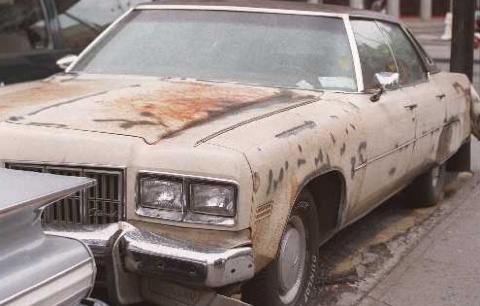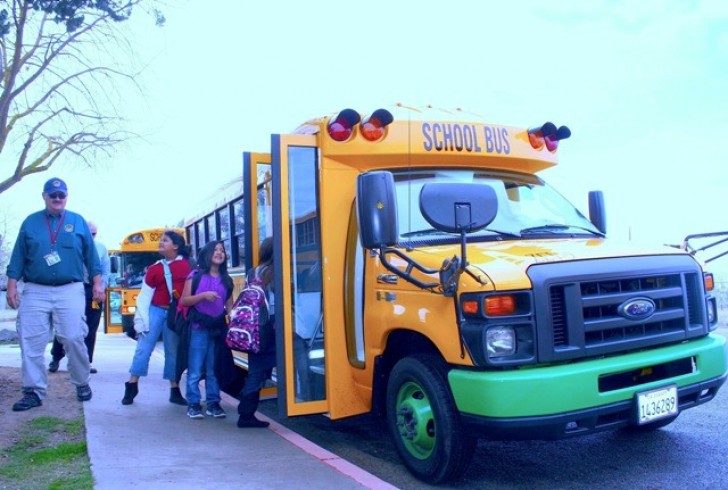California has been a world pioneer for decades in reducing vehicle emissions, including its 20-year effort to get significant numbers of zero-emission vehicles on the roads.
It's also had intermittent programs to encourage the trade-in of older cars that qualify as "gross emitters" for newer and cleaner vehicles.

clunker
Now, a bill that seems set to pass this month will pair the two programs for the first time and establish a steady source of funding for its clean-vehicle purchase rebate program.
Focus on low-income drivers
Among the provisions of the Charge Ahead California Initiative, or Senate Bill 1275, is one that funds vouchers specifically targeting lower-income Californians and communities of color.
Those vouchers provide incentives to trade in gas-guzzling “clunkers”--which are then scrapped--for new or used electric cars, addressing the problem that plug-in electric cars carry higher prices as new cars than similarly sized vehicles with gasoline engines.
DON'T MISS: 2014 BMW i3 Electric Car: Why California Set Range Requirements, Engine Limits
While electric cars cost less to run per mile than even fuel-efficient gasoline and diesel vehicles, that high initial price has traditionally meant that plug-in cars are bought by a more affluent slice of the state's drivers than are cars overall.
The vouchers can also be used to replace the vehicle altogether by funding the increased use of mass transit and car-sharing.
Electric school bus from Kings Canyon Unified School District, California
Clunker cash + purchase rebate
Low-income drivers who trade in their clunkers are to receive $1,500, with other drivers getting $1,000.
That money would be in addition to the current state purchase rebates of $2,500 for a zero-emission vehicle or $1,500 for a qualifying plug-in hybrid or range-extended electric vehicle.
ALSO SEE: Most Popular Car Line In California? The Toyota Prius Hybrid--Again
SB 1275 also puts the Clean Vehicle Rebate Initiative program on a permanent footing, by providing steady funding toward the state's goal of 1 million zero-emission vehicles on its roads by January 2023.
Those rebates, however, would eventually be reduced as the cost differential between plug-ins and gas or diesel cars falls.

2013 Tesla Model S and 2011 Chevrolet Volt in garage; photo by George Parrott
Income limit on rebates?
The bill also establishes the possibility of limits on the rebate, based on the applicant's income.
That provision responds to the widespread supposition that buyers of the Tesla Model S electric car or Porsche Panamera S E-Hybrid plug-in hybrid, which cost $70,000 to more than $100,000, are more likely to have higher incomes--and hence be less in need of financial incentives to convince them to buy a plug-in electric car.
MORE: Will California Pioneer A World Beyond Cars This Century?
Once the bill is passed, a funding plan for one year's worth of rebates and the specific rule changes are to be published no later than June 30, 2015, and will take effect starting in 2016.
SB 1275 was passed by the State Assembly last Wednesday, August 27. It has strong support in the California State Senate, which is expected to pass it this month--sending it to Governor Brown, who is expected to sign it.
[hat tip: Brian Henderson]
_______________________________________________













